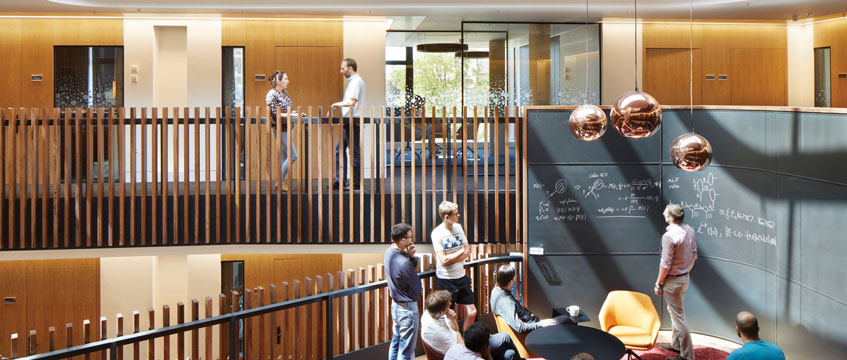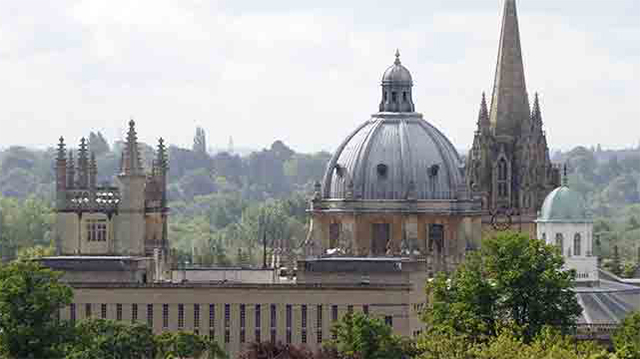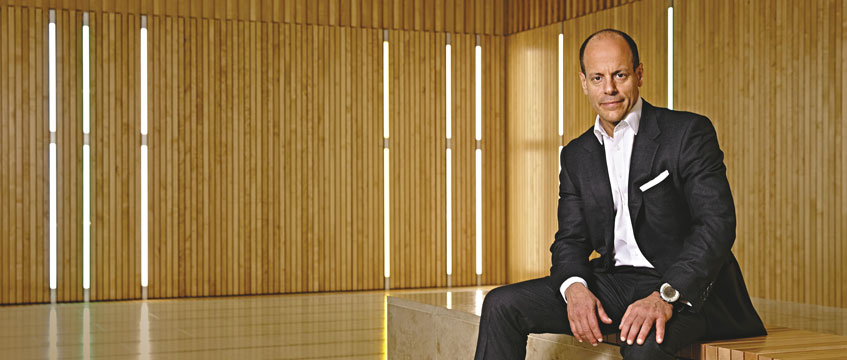COMMENT As we ponder the future of city centres, we are coming to an understanding that the new hybrid way of working means that people will work from home when it’s convenient and travel to work when they need to work socially or access specialist facilities. There is much about scientific research that makes it a good candidate as an answer to the question of “what now?” for UK city centres.
Science ticks both the boxes that necessitate a workplace. First, it requires specialist facilities. You can’t experiment with quantum entanglement on your kitchen table in the way that you might write a business report. For sensitive experimental work, scientists need physical access to a lab like the Beecroft Physics Building, which Hawkins\Brown designed for the University of Oxford, where ambient temperature is controlled to one-tenth of a degree and vibration is reduced to the width of a few atoms.
Secondly, science is an essentially social activity. Effective teamwork and collaboration are essential to every discipline of research. The Nobel Prize for physics hasn’t been awarded to an individual for nearly 30 years.
A recent Savills survey of workers in life sciences found that researchers are also markedly more mobile in their careers than ordinary office workers. A fierce international battle for talent sees a large number of vacancies for a relatively limited pool of highly skilled workers. The same is true in the top flight of academic research.
Researchers move between a network of internationally renowned cities or clusters. In the UK, that means the Oxford-Cambridge Arc, London, Manchester, Leeds and Glasgow compete with places such as Shanghai, Los Angeles and Basel for a global talent pool.
Global reputations
Cities need labs and labs need cities. Cities with a global reputation, such as Oxford, are excellent places to locate scientific research because they come with a recognised brand that attracts talented employees and provides them and their families with a desirable lifestyle. Likewise, cities are desperate to foster prestigious research clusters that grow their global profile and attract international investment.
Convenience and the opportunity for clustering are the reason we have cities. The attraction of these effects is the big reason that the University of Oxford builds new facilities, such as our recently completed Biochemistry Building, in the north-east corner of the city centre. It would have been far easier and cheaper to build the facilities offered by the Oxford University Science Area out of town.
The complexity associated with overcoming the challenge of a constrained city centre site is justified, because it places scientists in proximity not just to their immediate colleagues and the wider academic milieu, but also to their homes, their lives and the attractions of the city.
The phenomenon of agglomeration that occurs in urban centres has given rise to a new generation of research buildings with strongly defined dual roles – in effect, labs plus office.
Scientists at buildings like Beecroft or Biochemistry in Oxford, or the recently competed Interdisciplinary Biomedical Research Building at the University of Warwick, have access to both collaborative working facilities and quiet write-up spaces that are second-to-none, in comfortable surroundings that remove obstacles to work and aid talent retention.
Hot markets
As companies up and down the country recalculate the amount of city centre office space they need, there is an opportunity for urban rebirth in cities that can generate demand among science and tech occupiers. One such city is Cambridge, which is experiencing an extraordinary shortage of lab space – we are likely to see any vacant office buildings in a hot market such as this converted into hybrid lab and collaborative workspace. It is entirely possible to do this – some already are – and it will bring a new cohort of professional workers into the centre of town.
Oliver Milton is managing partner at Hawkins\Brown











